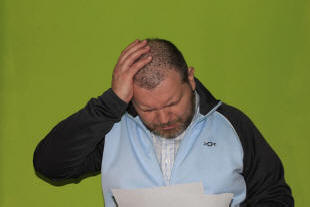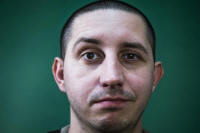TKT Core Module 3: Teachers' and learners' language in the classroom
Correcting learners
 |
Correcting learners is a key teaching skill. It can
be overdone and some learners feel it gets tedious so handle with some
care.
In this guide, we are concerned with correcting learners' production.
However, you will remember from
the guide to categorising
learners' mistakes that learners also make receptive errors.
 |
Key concepts in this guideBy the end of this guide, you should be able to understand and use these key concepts: |
Look out for these words like this
in the text.
There will be tests at the end of the guide for you to check that
you understand the ideas.
 |
Spoken error |
Speaking in a foreign language is both stressful and difficult.
Errors are likely to be quite common even with advanced students.
It is not always necessary to correct because, often, learners can
correct themselves so a grimace is
frequently enough. For example:
- Are you sure that's right?

- That can't be what you mean!

- Ouch. The grammar's gone wrong.

This is not the place to repeat what was said in the guide to categorising learners' errors. Here we are dealing with how to respond to them. We will, however, use three of the same categories:
- referential or lexical errors
- Errors in choice of lexis are common and usually simple to
correct. In many cases, the learner simply does not know
the correct word so the response has to be to provide it.
One cannot guess. It is, however, possible to let the
learner know by a puzzled look, a shocked look or other
grimace. See above.
Another response is to direct the learner to a dictionary or a text to see the word exemplified or in context. - syntactical errors
- There are many different sorts of these and responses need
to vary, too.
Error in tense structures are common. A frequently effective response is to set the utterance in a time context by using concept questions. For example:
Are we talking about past, present or future?
Is this a recent event which changes the present?
etc.
Another response is to draw a time line to represent the events. For example:

There is a guide to using timelines on this site (from which that diagram comes).
Gestures, such as pointing forwards or back for the tense are also helpful.
Other syntactical errors frequently concern a single word in a sentence, such as a preposition or adverb wrong or wrongly placed.
A useful response is often to use finger correction (counting the words in the sentence on your fingers and stopping at the problem). From this, learners can get which word is causing the problem and can sometimes correct it. - phonological errors
- are also common. If the learners are aware of the
phonemic script, that can be used to focus on, e.g., the
difference between leave and live (/liːv/ vs. /lɪv/).
Errors in stress can be tackled by marking the stress on the word on the board or by tapping out the pattern on a desk.
Some other techniques for handling error include ...
- Echoing the learner's utterance, stressing what's wrong as in, e.g.:
- You said you see him yesterday?
There were three child? - Recasting what the learner said correctly and stressing the difference to get them to notice:
- Learner: I will taking the train.
Teacher: Oh, you will be taking the train. - Delaying error correction
- During speaking and fluency practice it is frustrating for learners and interrupts the lesson if the teacher steps in to correct. A better response is to listen carefully, make notes and deal with serious errors after the activity is finished.
 |
Who corrects?
|
There are alternatives to the teacher correcting an error:
There is no need to correct every error because that takes a lot of time and the learners will not remember all of it so:
 |
Correcting written error |
The same considerations apply here in many cases. It is not very motivating to receive a piece of homework covered with lots of red marks, crossings out and rewritten sections.
 |
Self-test questions |
Before you go on, make sure you can answer these questions. If you can't, go back to the sections which give you trouble.
If you are happy with your progress, go on.
 |
Tests and practice for TKT |
There's only one practice test.
| Test 1 | A gap-fill task |
Now you can return to the Module 3 index:
![]()
or go on to the next
guide which is to
giving feedback.

